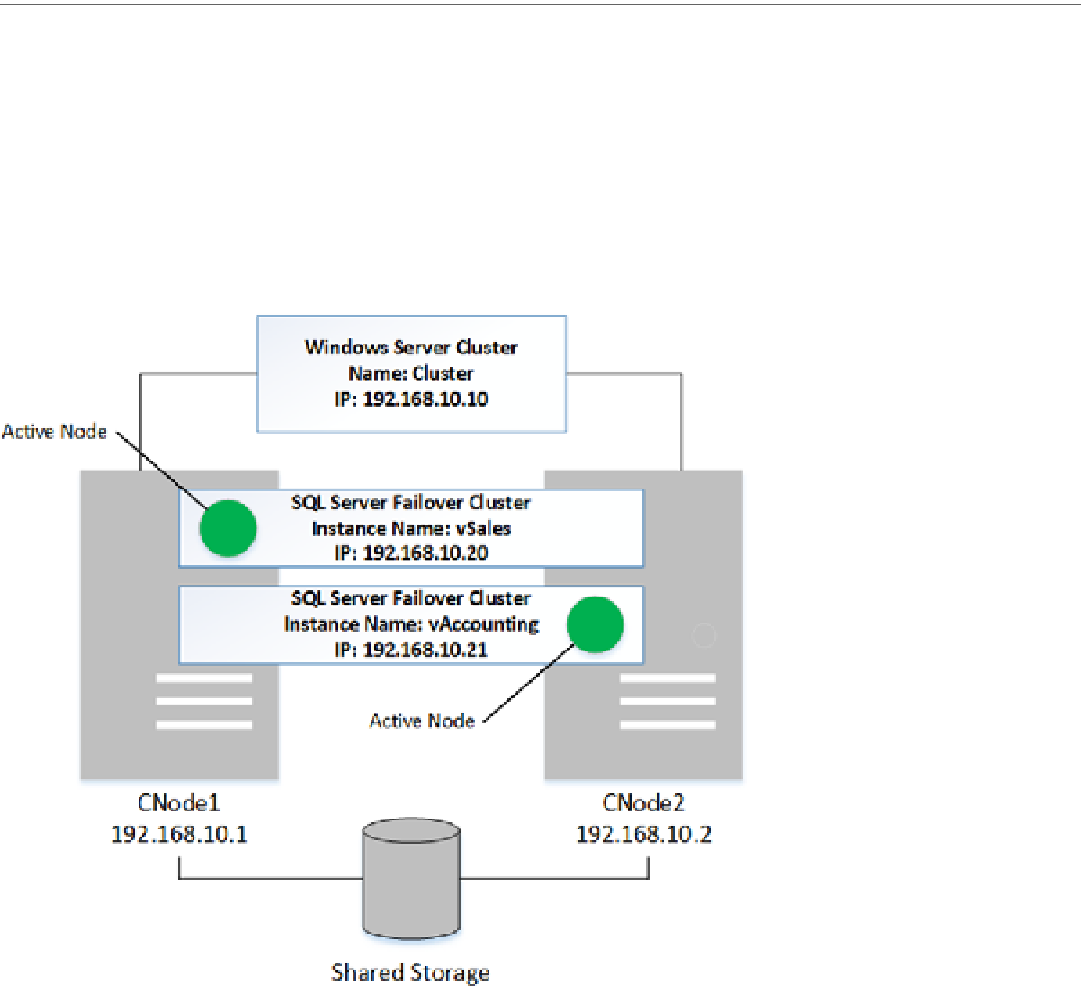Database Reference
In-Depth Information
The system databases also use shared storage. With SQL Server versions prior to 2012, this also applied to
tempdb
,
which often became the performance bottleneck. Even though you could
technically
move
tempdb
to local disks,
Microsoft does not support such a cluster configuration. Fortunately, with SQL Server 2012 and beyond, Microsoft
began to support cluster configurations with
tempdb
placed on a local drive.
While it is relatively easy to set up Windows Clusters, which host a single SQL Server Cluster instance, they
double the number of servers that you will need. Even though you are generally not required to buy another
SQL Server license if a passive node is used for high availability only, there are still the hardware, electricity, and
maintenance costs to consider.
■
Work with Microsoft licensing specialists to determine the exact licensing requirements for your high availability
configuration. licensing requirements vary based on sQl server version and usage scenarios.
Note
One of the ways to reduce the cost of a Failover Cluster solution is by using
multi-instance failover clusters
. In this
configuration, one Windows Cluster hosts multiple SQL Server Failover Clusters instances.
Figure
31-2
shows an example of a two-node multi-instance cluster. There are two cluster instances of SQL
Server:
vSales
and
vAccounting
. The
CNode1
cluster node is the active node for the
vSales
instance and the
CNode2
is the active node for the
vAccounting
instance.
Figure 31-2.
Two-node multi-instance cluster

